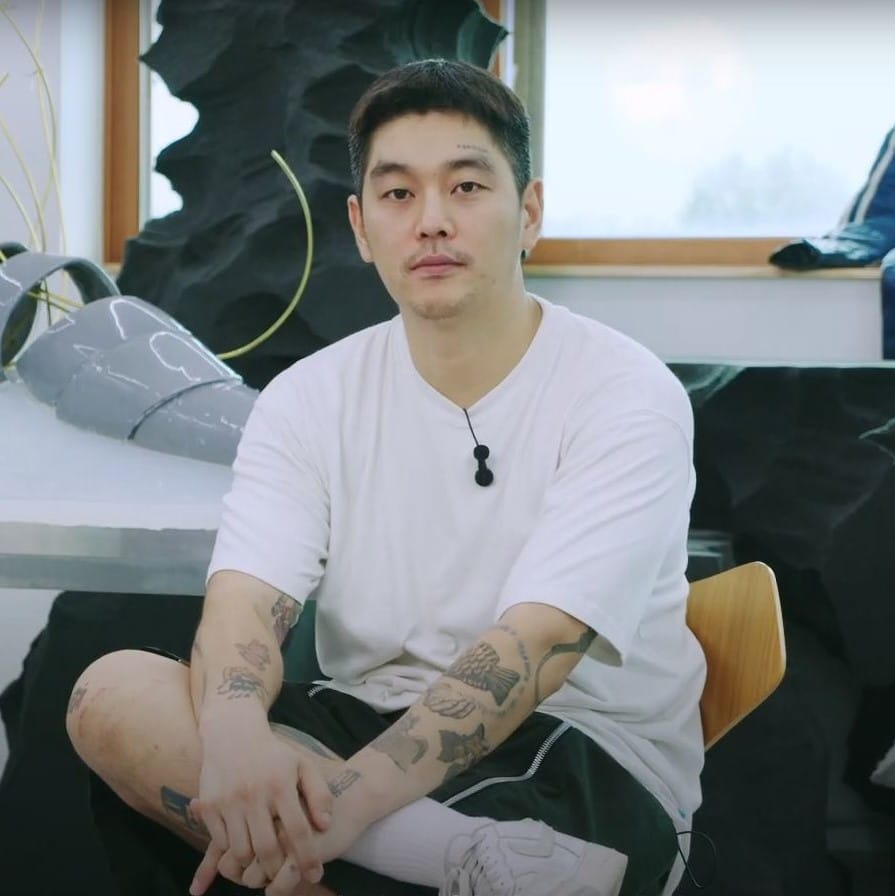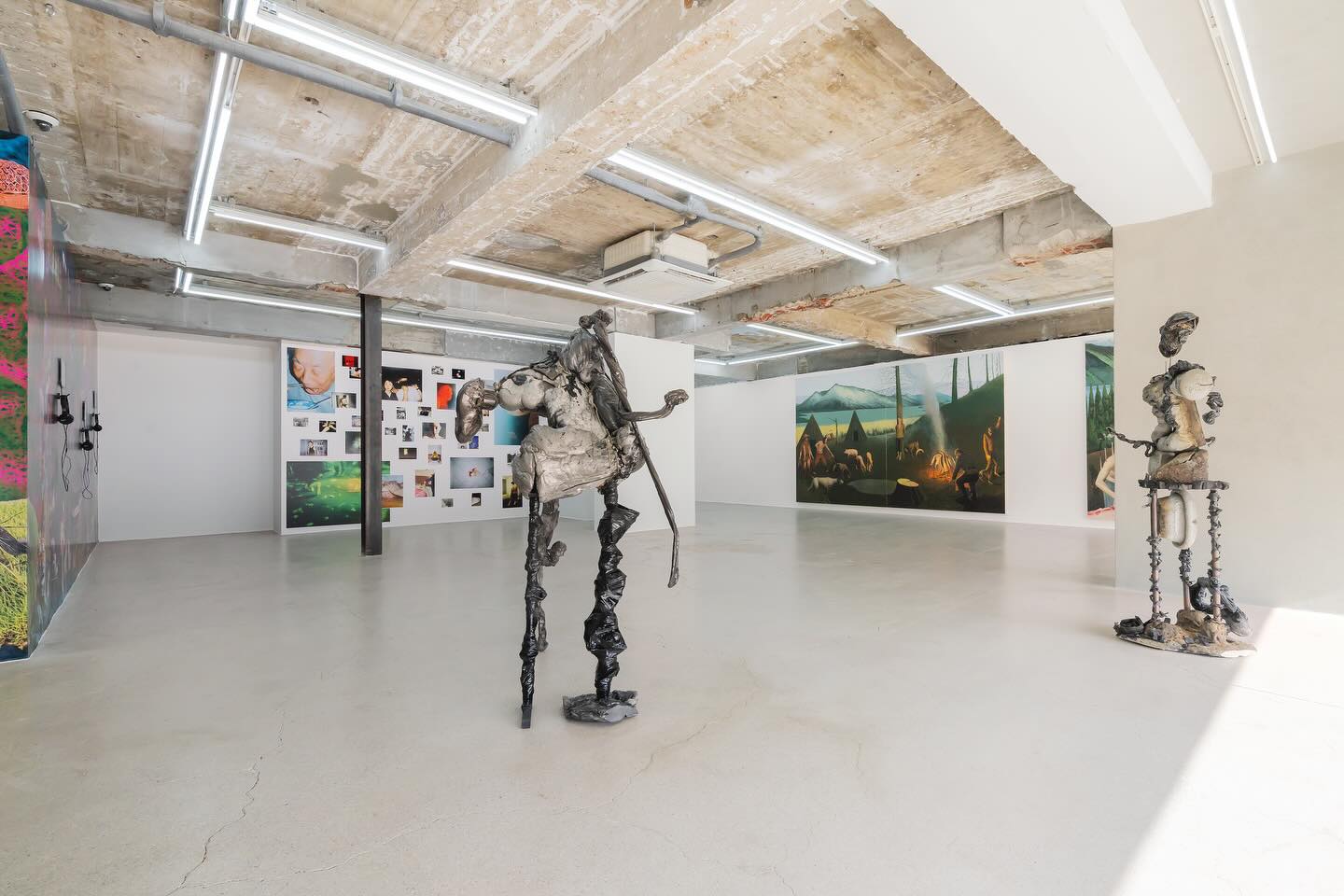 Title image of “The Last Things Before The Last” at HITE Collection, Seoul. (December 3, 2022 – February 12, 2023) © Hite Foundation.
Title image of “The Last Things Before The Last” at HITE Collection, Seoul. (December 3, 2022 – February 12, 2023) © Hite Foundation.Works by young artists Rondi Park, WONJEONG DEPARTMENT STORE, and TZUSOO are featured in The Last Things Before the Last, a 2022 Young Artist exhibition organized by HITE Collection located in Gangnam, Seoul. The exhibition runs from December 3, 2022, to February 12, 2023, every Thursday through Sunday from 12:00 PM to 6:00 PM.
The title of the exhibition, The Last Things Before the Last, was borrowed from the subtitle of Siegfried Kracauer’s book History. The exhibition examines stories that break away from the notion that time only flows chronologically and considers variously shaped times, creating a niche that does not belong to either side. This intermediate area is where infinite possibilities exist outside of the linear flow of time.
The exhibition explores the possibilities of “power,” as Markus Gabriel explained in his book The Power of Art: “What has power over our imagination has absolute power over us.” This “power” is presented through the works of young artists and explores where their imaginations are heading and what power each is exerting.
 Installation view of Rondi Park’s ‘Mom, it’s okay you don’t buy me, can you just have a look at this?’ (2021) at “The Last Things Before The Last” at HITE Collection, Seoul. Photo by Aproject Company.
Installation view of Rondi Park’s ‘Mom, it’s okay you don’t buy me, can you just have a look at this?’ (2021) at “The Last Things Before The Last” at HITE Collection, Seoul. Photo by Aproject Company.Rondi Park, an artist who values handicrafts, refers to herself as a “visual crafter” and works with a variety of media, including drawings, textiles, performances, and ceramics. In this exhibition, the artist explores the desires that arise in capitalist societies. She expresses her personal experiences with specific products, such as Goody Hair Pins and Flik Flak watches, through her works. Furthermore, the artist delves into the past to trace the formation of her aesthetic perspectives and the origin of her visual desires in the era of hypercapitalism. Although personal, this emotion of desire is something that anyone living in today’s society can empathize with. Thus, the artist searches for the connection between the “self” and society through her personal history.
 Installation view of WONJEONG DEPARTMENT STORE’s artworks at “The Last Things Before The Last” at HITE Collection, Seoul. Photo by Aproject Company.
Installation view of WONJEONG DEPARTMENT STORE’s artworks at “The Last Things Before The Last” at HITE Collection, Seoul. Photo by Aproject Company.WONJEONG DEPARTMENT STORE focuses on media installation and performance. The artist investigates the desire for images with elements of fantasy and how these images relate to the worlds of others. Using herself as the material, she borrows the form of myth to represent the contemporary society in which the virtual world plays a significant role. For example, ઈSkincare Mythઉ (2022) expresses sleek images on the smooth screen surface. This work is a package that creates a digital self that can be updated both online and offline. In other artworks, she imagines sticky blood dripping from such smooth skin or constructs a certain space composed of skin and blood. The artist examines the various relationships formed in the process of mixing or confronting online selves with offline selves and recalls the senses, desires, and limitations of the physical body.
 Installation view of TZUSOO’s ‘Schrödinger’s Baby’ (2019/2020) at “The Last Things Before The Last” at Hite Collection, Seoul. Photo by Aproject Company.
Installation view of TZUSOO’s ‘Schrödinger’s Baby’ (2019/2020) at “The Last Things Before The Last” at Hite Collection, Seoul. Photo by Aproject Company.TZUSOO explores human identity in the digital age and the conditions of human existence in the digital environment. The artist attempts to reveal the oddness and uncanniness perceived in the transition between the virtual and physical worlds. The artist created a virtual character that is outside the limits of the physical body. Through this character, the artist envisions a universe in which art transcends physical limitations. TZUSOO’s work allows us to measure the growing power of information in an increasingly data-oriented environment. Her artworks also reflect the fact that artificial intelligence, which is commonly believed to be limitless, is influenced by humans with physical limitations and stereotypes.























